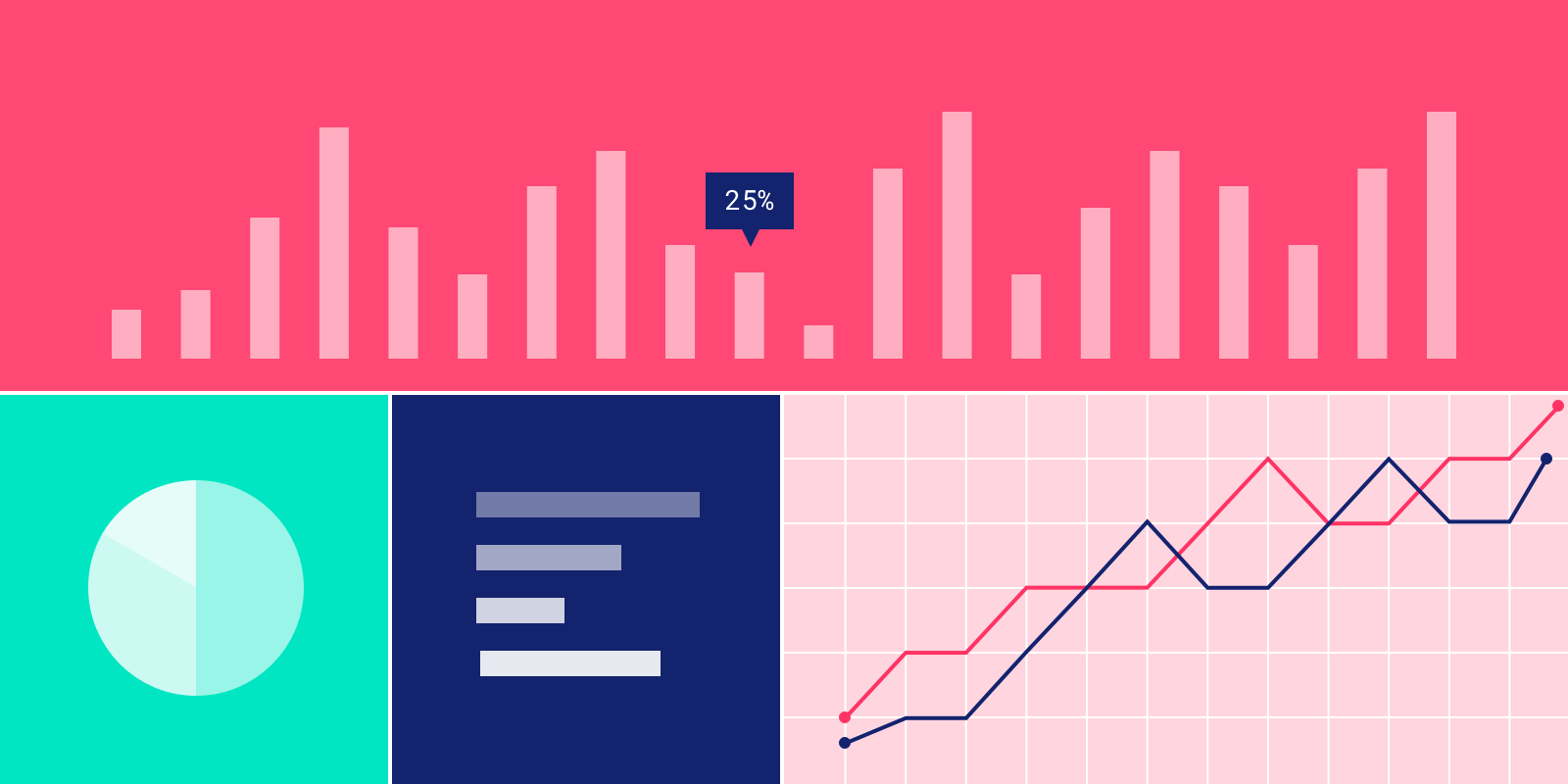Erica Hayton
Contributor
As a sales manager, you’re probably always pushing for more.
More connections. More conversions. More sales.
But while total sales can be a strong indicator of how your team is performing, it shouldn’t be the only metric that you pay attention to.
Why?
Because although it can give you a high-level account of sales growth, it doesn’t measure efficiency, help you identify weak points in your sales system, or tell you exactly where your team can improve.
To truly measure your sales team’s performance, you need a holistic approach using Key Performance Indicators (KPIs).
These will help you look beyond just the total number of items sold, so you can start building a solid sales foundation that contributes to long-term success.
In this post, we'll look at three fundamental KPIs—every organization has different challenges and might look at more KPIs than these, but think of this is your jump-off point:
1. Conversion rates
You’ve probably heard that in the world of sales, you need to hear a few “nos” before you get a “yes.”
While that might be true, having a poor conversion rate can be a red flag that you’re wasting time, money, and resources connecting with the wrong individuals or sharing the wrong information.
Your conversion rate is a strong representation of your return on investment.
A high conversion rate tells you you’re investing in prospects who see the value in your products or services, while a low conversion rate shows you’re missing the mark somewhere in the sales process.
Conversion rates can vary from industry to industry. For example, Wolfgang Digital found that the average conversion rate for e-commerce was only 1.56%.
However, look at food order sites and that conversion rate jumps to over 21%—a huge difference.
Here’s the formula to find your conversion rate:
Let’s say you need 10 new customers to meet your sales quota. You decide to cast a wide net and reach out to 300 potential leads, hoping 10 will commit to purchase.
After your sales process is complete, you close your 10 sales. In this case, your conversion rate would be (10/300) x 100, or 3.33%.
Although you got the sales you needed, you wasted time and energy connecting with 290 leads who ultimately weren’t interested.
Now, let’s consider the alternative.
Rather than reaching out to as many potential leads as possible to get your 10 sales, you decide to focus on the 50 prospects who best fit your ideal audience.
At the end of the sales cycle, 10 leads have converted. Your new conversion rate is (10/50) x 100, or 20%.
Your end sales are the same, but by focusing on improving your conversion rate rather than just your total sales, you can work more efficiently and save a lot of time.
Where to use conversion rate:
- Stage-by-stage conversion rates: Measure your conversion rate at various stages of the sales process to determine weak points in your funnel. A major drop between stages could be a signal that your leads aren’t getting the information or attention they need.
- Sales rep conversion rates: Identify conversion rates for each salesperson on your team. Individualized conversion rates can help you spot high performers—as well as those not pulling their weight.
- Average conversion time: Conversions need to happen in a timely manner if you want to grow. Track the average conversion time by identifying a start and close date for each deal.
2. Average deal size
Having a high volume of sales is great, but your sales number doesn’t tell you much about the strength of those deals. If your deals are tiny, your sales team can get trapped on a hamster wheel just trying to move the needle.
Your average deal size pushes you to look at the quality of your customers rather than just the quantity. When you have a better understanding of how much money each deal is bringing in, you can create stronger strategies for selling for efficiently.
The equation for Average Deal Size (ADS) is simple:
Average deal size helps you track whether your contracts are growing, shrinking, or staying consistent, as well as identify risky leads.
Say the ADS for your organization was $10,000 in Q1 of this year. In Q2 it grew to $12,000 and by Q3 ADS was up to $15,000.
This steady progression shows that your sales team is going after—and landing—bigger and bigger contracts. Alternatively, a decline in ADS could be a sign that your audiences’ budgets are changing.
Now, let’s say a sales rep has a deal in the pipeline for $50,000. Because this deal is exponentially larger than your average deal size of $10,000, this deal should be labeled high-risk.
By identifying this risky deal early in the sales process, you can provide additional support, information, or guidance to your team to ensure the sale closes.
Where to use average deal size:
- ADS per client size: If you’re targeting startups, small-to-medium businesses, and enterprise-level organizations, your ADS is probably all over the place. You can break down ADS by client size for a stronger picture.
- ADS per sales rep: Like conversion rate, knowing your ADS per sales rep can help you identify high-performers or those who might not be performing as strongly as they could be.
- ADS per product/service: If you have a particularly expensive product or service, this could skew your overall ADS. Take a look at your deal size per offering to get a closer look.
3. Lifetime customer value vs. customer acquisition cost
Growth happens when your sales team successfully nurtures leads into customers—while also convincing past customers to purchase again. In order for your business to remain sustainable, your customers need to purchase more than it costs you to acquire them.
On average, it costs about five times more to attract a new customer than to keep an existing one. Returning customers also spend about 67% more on average than new customers.
Knowing your Customer Lifetime Value (CLV) to Customer Acquisition Cost (CAC) ratio can help you assess the quality of your prospects, as well as if you’re meeting your customers needs.
Here’s how to find your CLV to CAC ratio:
Let’s say you spent $300,000 and attracted 1,000 new customers over the course of one year. Your CAC for this time period would be $300.
However, let’s also say your average customer spends $150 a year and remains a customer for two years. Your CLV would be $300, giving you a CLV to CAC ratio of 1:1.
In other words, you’re breaking even. You’re not losing money, but you’re not growing either. You’d be at the same point if you weren’t selling anything at all.
In this case, you need to either decrease your acquisition costs or encourage past customers to spend more.
Now, let’s say you still have that same CAC of $300, but your customers are spending $3,000 a year for 3 years. Your new CLV would be $9,000 with a CLV to CAC ratio of $9,000:$300, or 30:1.
While this may seem like a good thing, having such a high CLV to CAC ratio says you’re not understanding your customers’ worth. If you’re not investing your profit back into acquiring new, high-quality customers, you’re leaving a lot of potential business untapped.
Ideally, your CLV:CAC ratio would be 3:1.
Where to use your CLV:CAC ratio:
- CLV:CAC per platform: Breakdown your CLV:CAC ratio by marketing channel or platform, such as social media site or inbound source, to determine where you’re finding your best prospects and customers.
- CAC payback period: Identify how long it takes for your customer to pay back your acquisition cost.
- Customer churn: Customer churn rate tells you how quickly you’re losing customers, allowing you to better strategize on customer acquisition to appropriately replace lost customers.

Pro-tip
Destroy churn.
Learn strategies to reduce churn and keep customers longer with this handbook.
Use KPIs to improve your sales performance.
If you want to improve your sales process, you need to look beyond just the number of items sold. However, the KPIs you track should work together to help you make strategic decisions about your sales funnel.
Focus on how each metric contributes to another. Identify patterns and connections that may not be immediately obvious. For example, if you’re trying to increase conversion rate, you should see how the changes you’re making influence average deal size or your acquisition costs.
A CRM allows you to easily manage, control, and track a variety of metrics in one place. By connecting your conversion rates, average deal size, and your CLV:CAC ratio, you can get an accurate view of what is—and isn’t—working for your sales team.
These KPIs can give you a great foundation for getting started, but in order to truly measure your sales performance, you’ll want to identify key metrics specific to your organization’s needs and challenges.
With the help of a CRM, you can easily dig deeper into your metrics to find KPIs important to your team.

Pro-tip 👇
Next steps:
Learn more about diagnosing your KPIs with this Win/Loss Analysis Handbook.






